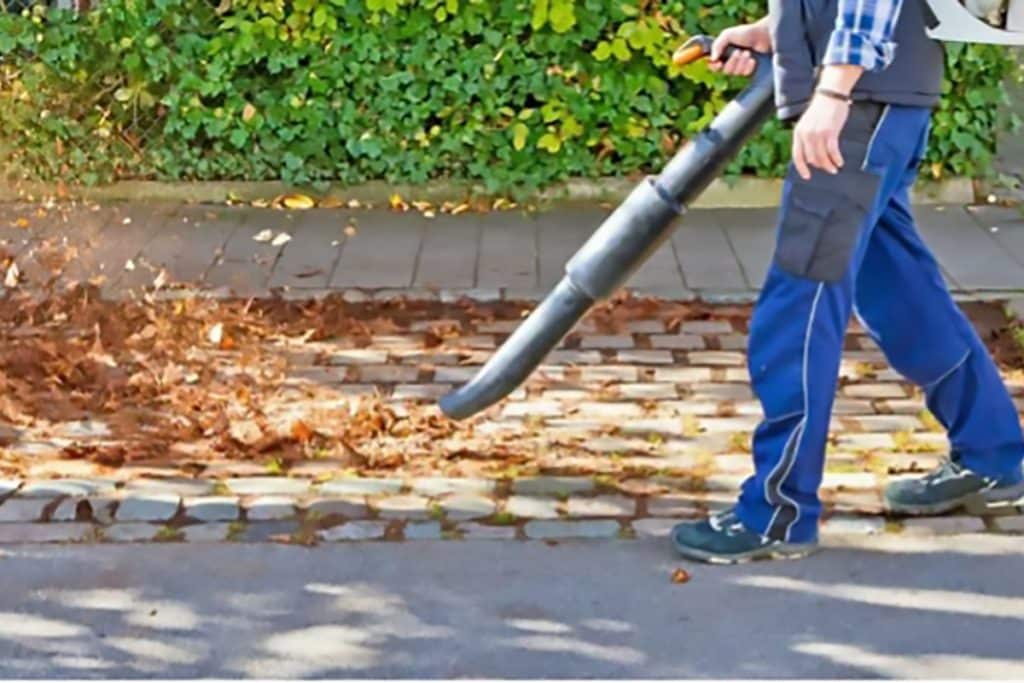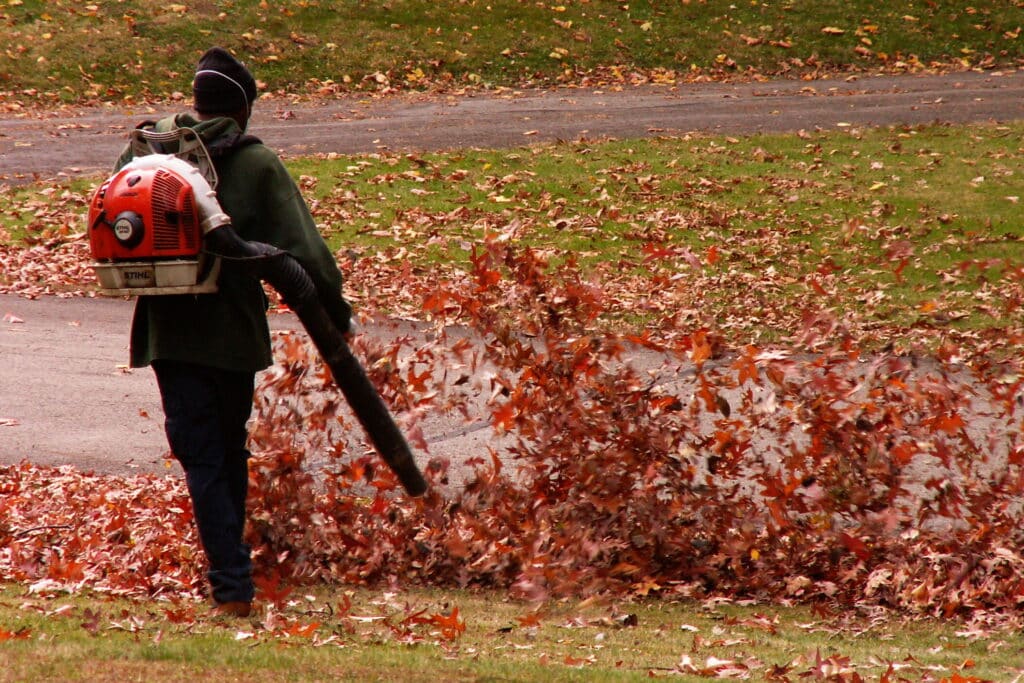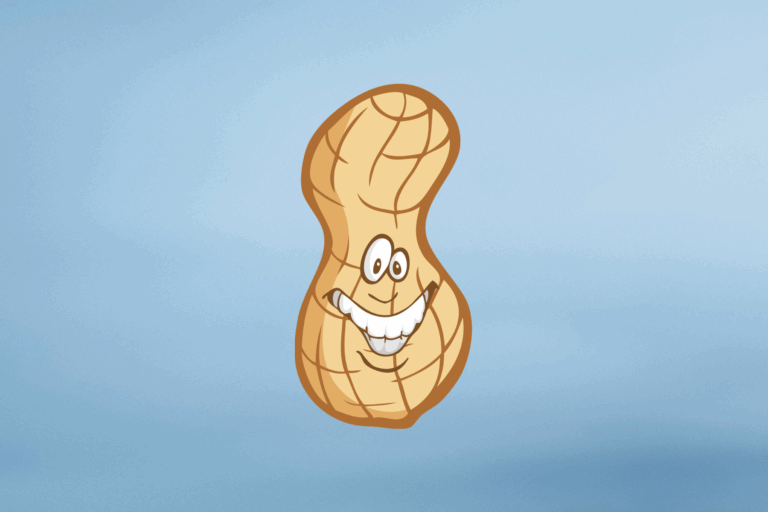A leaf blower can be a powerful tool in keeping your yard clean, but using it effectively requires more than just turning it on and blowing leaves around. Professional landscapers know that technique, timing, and proper handling make all the difference.
Whether you’re a homeowner looking to maintain your lawn or a professional aiming for flawless results, learning to use a leaf blower like a pro will save you time and effort.
Choosing the Right Leaf Blower
Before diving into techniques, selecting the right leaf blower is essential. There are three main types: gas-powered, electric, and battery-operated models. Gas-powered leaf blowers provide the most power, making them ideal for large areas, but they are heavier and require maintenance.
Electric models are lightweight and perfect for small yards, though they need an extension cord. Battery-operated versions offer portability without a cord but may have limited battery life. Choose one based on your yard size and personal preference.
Wearing Proper Safety Gear
Safety is often overlooked when using a leaf blower, but professionals always prioritize it. Protective eyewear shields your eyes from dust and debris, while ear protection guards against prolonged exposure to noise. A dust mask prevents inhalation of fine particles, especially on dry days.
Wearing gloves and long sleeves can also protect against flying debris. Ensuring safety enhances comfort and allows for extended use without fatigue.
Understanding the Right Blowing Technique

Efficient leaf blowing is all about technique. Instead of randomly blowing leaves in every direction, establish a pattern. Start by positioning yourself upwind so the breeze helps move leaves in the desired direction. Keep the nozzle low and use controlled, steady movements.
Rather than aiming directly at the pile, sweep side to side in a shallow arc to guide leaves efficiently. Professionals work in sections, gradually gathering leaves into neat piles for easy collection.
Using the Wind to Your Advantage
A common mistake is working against the wind. Professionals always check the wind direction before starting. Blowing against it wastes energy and causes leaves to scatter. Instead, work with the wind, using it to push leaves naturally into piles. If the wind changes, adjust your strategy to maintain control over the leaf movement.
On calm days, create your own airflow by directing leaves toward a sheltered area where they won’t be easily disturbed.
Mastering Speed and Power Adjustments
Many leaf blowers have adjustable speed and power settings. High power is useful for stubborn wet leaves, while lower speeds work better for delicate areas like flower beds and gravel paths. Using full power in every situation is inefficient and can create unnecessary mess. Professionals adjust the settings based on the surface and density of the leaves, ensuring they work smart, not hard.
Blowing Leaves in a Strategic Pattern
The key to efficient leaf blowing is working methodically. Instead of running around aimlessly, work in sections, starting from one side of the yard and moving systematically.
Professionals often begin at the outer edges and guide leaves toward a central collection point. If working near driveways or sidewalks, blow leaves onto the lawn first before collecting them into a pile to prevent debris from spreading back onto hard surfaces.
Handling Wet Leaves and Stubborn Debris
Wet leaves are heavier and harder to move, making them a challenge even for high-powered blowers. Professionals use a combination of short, forceful bursts and gentle sweeping motions to lift and guide them.
If leaves are particularly stubborn, drying them out in the sun for a few hours before blowing can make the job easier. In cases where a blower isn’t enough, using a rake to loosen compacted debris before blowing will improve results.
Cleaning Hard-to-Reach Areas
Gutters, corners, and flower beds require extra attention. Professionals use specialized nozzles or narrow attachments to direct airflow into tight spaces without disturbing delicate plants.
In gutters, starting from one end and moving debris toward the downspout ensures smooth cleanup. Adjusting angles and positioning the blower correctly can make all the difference when dealing with confined spaces.
Minimizing Noise and Disturbance
Leaf blowers are known for their noise, which can be disruptive to neighbors. Professionals are mindful of when and where they use their equipment. Early morning or late evening use should be avoided in residential areas.
Keeping power levels in check and working efficiently reduces noise pollution and makes the task more neighbor-friendly. Some models are designed to be quieter, making them a good choice for suburban or urban environments.
Proper Storage and Maintenance
Caring for your leaf blower ensures longevity and peak performance. Gas-powered models require fuel checks, air filter cleaning, and occasional spark plug replacement. Electric and battery-operated versions need routine dusting and battery inspections.
Storing the blower in a dry, secure location prevents weather damage. After each use, clearing debris from the nozzle and checking for clogs keeps it functioning smoothly for the next job.
Getting the Most Out of Your Leaf Blower
Using a leaf blower effectively is about skill, not just power. The right tool, combined with proper technique and strategy, makes all the difference. By choosing the correct model, wearing protective gear, working with the wind, and mastering efficient movements, you can clean up your yard with professional-level precision. With practice, your leaf blower will become a time-saving asset rather than just another garden tool.
















